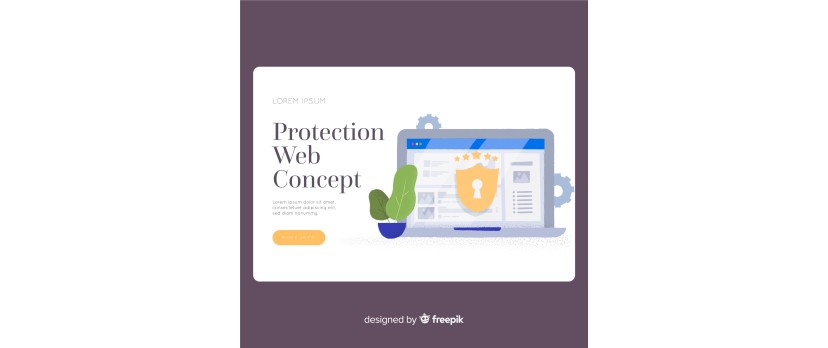Think of this year’s Black Friday. Your online store is buzzing with potential customers. But suddenly, your checkout page crashes. Files are locked, and a ransom note pops up demanding payment in crypto. Just like that, your sales vanish—and so does customer trust.
That’s ransomware in action.
Ransomware attacks don’t just target big corporations. Small and mid-sized eCommerce stores are just as vulnerable, sometimes even more so, because they tend to cut corners on security.
In this post, we’ll break down exactly why your checkout pages are a front door for attackers, and what you can do to lock yours down.
Why Checkout Pages Are High-Value Targets
Your checkout page is where your traffic turns into money. It’s where your thoughtful pricing strategy finally pays off. It's where customers type in their payment info, personal details, and hit “Buy.” And that makes it a prime target for cybercriminals.
Ransomware experts know that if they lock down your checkout, your store grinds to a halt. No transactions. No revenue. And if customer data is at risk? That’s a compliance nightmare.
Here’s why attackers love this spot:
It’s high pressure. You’ll likely pay up fast to get sales back online.
It’s loaded with sensitive info. Credit cards, billing addresses, phone numbers.
It’s often overlooked. Many store owners secure the homepage but forget the backend.
In short: if your checkout’s vulnerable, your entire business is vulnerable. Put simply, the impact of ransomware can be big enough to bring your business down.
Key Vulnerabilities in eCommerce Platforms
Ransomware doesn’t need a big opening. Just one weak link in your setup can be enough to bring your store down. These are the most common ways attackers sneak in:
Outdated Software: Running an old version of your CMS (like WordPress or Magento)? Vulnerabilities in outdated themes, plugins, or extensions are an open invitation for hackers.
Weak Admin Credentials: If you’re not using strong, unique passwords with two-factor authentication (2FA), you’re asking for trouble.
Insecure Hosting: Cheap, shared hosting might save a few bucks, but it can leave you exposed. Misconfigured servers or poor isolation between accounts can lead to cross-contamination.
Overlooked Third-Party Tools: Many store owners install third-party plugins, use a free invoice generator, and payment gateways without vetting them. One compromised vendor can give attackers a backdoor into your system.
Lack of Backups: No recent backup? Then you’re one ransomware attack away from losing everything.
Knowing these weak points is half the battle. Securing them is the other half—and that’s where we’re headed next.
Signs Your Store Might Be Under Ransomware Attack
Spotting early signs of a ransomware attack can help you act fast and limit the damage. Here’s what you should look out for:
Sudden Checkout Errors: Pages time out, buttons stop working, or users can’t complete transactions.
Weird Redirects or Pop-Ups: Customers report being redirected to unknown sites, or odd pop-ups appear during checkout.
Locked or Encrypted Files: If you notice files with strange extensions or ransom notes on your server, that’s a flashing red light.
Unusual Admin Activity: Logins from strange IP addresses or changes to settings you didn’t make? Someone else might be inside your dashboard.
Performance Drops: A slow or glitchy checkout can mean malicious code is running behind the scenes.
If any of these show up, don’t ignore them. Investigate immediately—or better yet, have monitoring in place to catch issues before they escalate.
How to Safeguard Your Checkout Process
Protecting your checkout starts with solid hosting. Choose a provider that specializes in secure eCommerce environments, and make sure your server is hardened—close unused ports, keep the OS up to date, and limit access to only what’s needed.
Just as important is staying on top of updates. Old plugins, outdated CMS versions, or abandoned extensions are like unlocked doors for attackers. Remove anything you’re not actively using, and set a regular cadence for updates.
Next, lock down admin access. Use strong, unique passwords for every account and enable two-factor authentication across the board. It’s a simple step that stops most brute-force attempts in their tracks. While you’re at it, limit login attempts and monitor for suspicious activity.
Backups are your insurance policy. Automate them daily and store them offsite (don’t just save them on the same server). And don’t wait for a crisis to find out they’re broken: test your restore process regularly to make sure it works when it counts.
A Web Application Firewall (WAF), like Cloudflare or Sucuri, can act as your first line of defense by filtering out malicious traffic before it reaches your store. Pair that with a malware scanner to detect any tampered files, especially in your checkout scripts.
Lastly, stay compliant with PCI DSS. That means never storing credit card data on your own servers and using secure, tokenized payment gateways like Stripe or PayPal. Make sure your site runs on HTTPS with a valid SSL certificate, and keep your payment processing setup lean and secure.
These are some basic safeguards that go a long way in keeping your store (and your customers) safe.
Create an Incident Response Plan
Even with solid defenses, things can still go sideways. That’s why having an incident response plan is non-negotiable. It doesn’t need to be a 50-page document—just a clear, step-by-step plan for what to do if ransomware hits.
Start by defining who does what. If you have a product team, assign roles for detection, communication, and recovery. Know who to call: a cybersecurity consultant, your hosting provider, or law enforcement.
Your plan should also include how you’ll isolate infected systems to stop the spread. If one part of your site gets compromised, you don’t want it dragging the rest down with it. Have a plan for how you’ll communicate this to customers. You want to sound calm and in control—not like you’re figuring it out as you go.
Think of your response plan like a fire drill. You hope you’ll never need it, but if the alarm goes off, you’ll be glad you practiced.
Ransomware Prevention Tools and Services
You don’t need to build your defenses from scratch. There are plenty of affordable and easy-to-set-up tools out there that can help you stay a step ahead of ransomware.
As touched upon previously, start with a good web application firewall (WAF). Services like Cloudflare, Sucuri, or Astra Security filter out bad traffic before it ever touches your site. They can block brute-force login attempts, SQL injections, and known malware signatures in real time.
Pair that with a malware scanner that checks your site files for suspicious changes. Tools like Wordfence (for WordPress), SiteLock, or MalCare are great at spotting infected scripts, especially in sensitive areas like checkout forms.
You’ll also want a reliable backup service. CodeGuard and Acronis are solid picks, offering automatic backups and quick restore options. If you’re on Shopify or a managed platform, check if backups are included in your plan or add a third-party app to fill the gap.
If your store handles lots of payments, PCI compliance tools like SecurityMetrics or Trustwave can help you audit and patch vulnerabilities before attackers find them. And if you’re serious about risk management, consider endpoint protection software (like Bitdefender or CrowdStrike) on any computers that access your site’s backend.
What to Do If You Get Hit
If ransomware hits your online store, the worst thing you can do is panic—or pay the ransom. Take a breath and act quickly but strategically.
First, isolate the infected systems. If your site’s hosted on a server, shut it down or disconnect it from the network to stop the malware from spreading. The faster you contain it, the more you’ll be able to salvage.
Next, reach out to your hosting provider and a cybersecurity professional. Most reputable hosts have incident response teams who can help assess the damage, identify the point of entry, and start cleanup.
Don’t delete anything just yet. Keep logs and files as evidence—they can be useful for forensic analysis or insurance claims if you're covered. And whatever you do, avoid paying the ransom. There's no guarantee you’ll get your files back, and paying only fuels the problem.
If you’ve got clean backups (and hopefully you do), use them to restore your site after the infected files have been wiped out. Before going live again, scan everything thoroughly, change all credentials, and update your software to patch any holes the attackers may have used.
Getting hit is tough, but a calm, prepared response makes all the difference in bouncing back quickly.
Wrapping Up
Ransomware is a real, growing threat to online stores of all sizes. And the checkout page is the bullseye. It’s where sensitive data lives, and where even a few minutes of downtime can mean big losses.
But the good news is you don’t need to be a cybersecurity expert to stay protected. With a few smart habits—like regular updates, strong authentication, daily backups, and a solid response plan—you can make your store a much harder target. Tools like WAFs, malware scanners, and trusted payment gateways do a lot of the heavy lifting for you.
Ultimately, a fast, frictionless checkout means nothing if it’s not safe. So take the time to build a checkout process that’s not just smooth, but also bulletproof.


Login and write down your comment.
Login my OpenCart Account